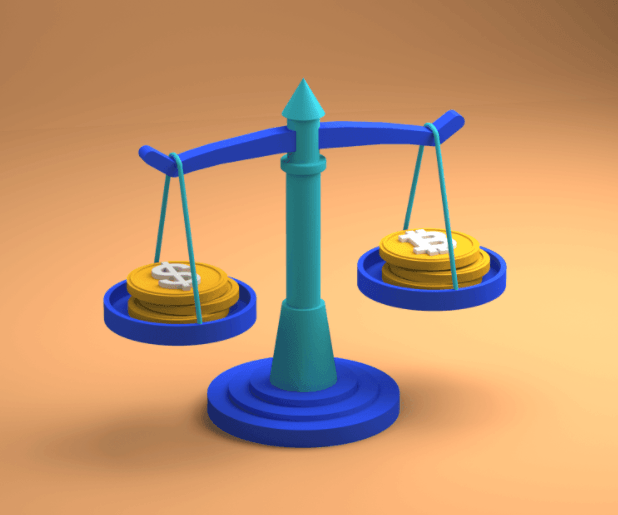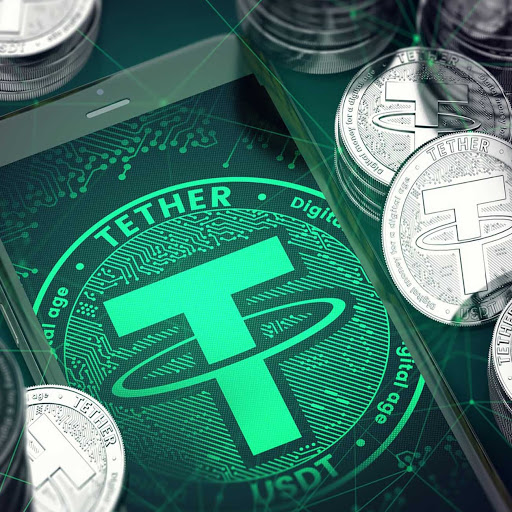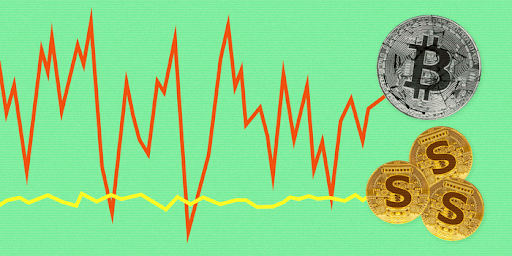Crypto Beginner Series EP 7: What Is A Stablecoin?
We tend to measure success in the crypto markets by the total percentage our holdings rise over a given amount of time. Stablecoins are the one exception to this rule. Their success should be measured by their price stability rather than price appreciation. Stablecoins are algorithmically designed to hold a steady value, typically $1 USD, even as the market moves up and down and users go in and out of their assets.
So why would anyone bother to convert their fiat into a cryptocurrency designed to remain stable? Doesn’t it make more sense to buy a coin that’s poised to rise rather than one designed to sit still? Let’s find out why.
How Stablecoins Work
To understand why someone would buy a stablecoin, or even convert their entire crypto portfolio to one, it’s best to take a look at their technical background. Stablecoins are stable because they peg their value. According to Investopedia, a currency peg is “a policy in which a national government sets a specific fixed exchange rate for its currency with a foreign currency or a basket of currencies.” In crypto, rather than the governments maintaining the “fixed exchange rate,” blockchains, decentralized autonomous organizations (DAOs), and smart contracts sustain the structure. Stablecoins must maintain this peg, typically to USD related instruments held in a 1:1 reserve.
The reason a stablecoin holds a steady value typically set at $1 is because the value of the crypto is matched to an equal value held in the reserve, much like the dollar, once on the gold standard. The most popular stable cryptocurrency Tether (USDT), for example, can instantly be swapped for $1 USD at any time because the creators claim to have $1 in their reserve for each minted USDT.
Why Should I Use A Stablecoin?
You can instantly swap this cryptocurrency back and forth for USD. But why would someone waste their time trading a digital dollar in the bank for a pseudo dollar? First, stablecoins offer near instant global settlement times at a fraction of legacy costs. This makes them an ideal candidate for remittances, while also avoiding price fluctuations or inflation during the settlement times. Further, you can send micropayments with minimal cost using a stablecoin, even a few dollars. This is effectively impossible using a bank because of wire fees, especially across borders.
Secondly, their near zero volatility makes them an ideal safe haven for investors and traders during times of instability in the crypto markets. These factors on their own are effective, but together, they make stablecoins an extremely attractive option for their wide range of flexible use cases.
Active traders rely on stablecoins during large swings to exit positions without having to convert back to fiat. Imagine if a trader only had two endpoints – money in their bank account or Bitcoin on an exchange. If a trader began to suspect Bitcoin was preparing to make a short-term correction, in this hypothetical, their only safe haven would be to sell their Bitcoin and send the money directly to their bank account which is costly, slow, and ineffective.
Stablecoins are the instant intermediary between those two destinations and offer ease of use and instant liquidity to dollars. Furthermore, as the trader prepares for a dip in Bitcoin, but perhaps believes a specific alt coin on a different exchange is ready to rise in value, they can instantly send the stablecoin to another location and exchange it for a new position. Stablecoins are the perfect vehicle to quickly move money from one exchange to another.
Stablecoins can also be used to earn yield on countless platforms in the crypto space, often over 10% per year and compounding weekly or monthly. There is an insatiable appetite for people to borrow stablecoins, meaning that platforms can pass on the bulk of those interest payments to customers willing to park their funds. This is perhaps the most compelling new use case for stablecoins that there is.

There’s a few more use cases stablecoins are good for. Rather than depositing increments of fiat directly to buy a dip, deposit your full fiat allocation and convert it into a stablecoin. From this position, you now have more flexibility in the crypto market, and have a fully settled stockpile of stable cash at your disposal. If you want to take things a step further, a lot of platforms offer attractive interest rates on your stablecoins while they are sitting waiting for use. Typically, you can expect anywhere between 5%-10% interest on average with some platforms offering more, at the expense of locking your tokens, buying their nascent asset, or meeting a required deposited amount. Some investors have gone as far as emptying their savings account into a stablecoin for lucrative passive income. Each of these strategies offer increasing risk, so make sure you DYOR!
Deciding On A Stablecoin
As it is with exchanges and coins, the most popular stablecoins including Tether (USDT), USD Coin (USDC), DAI (DAI), tend to have the most public information and history available for an informed decision. The more you rely on your stablecoin, the more you should read up on the backing of the coin, including its price, history, fundamentals, founders, supporting team etc. Although they are designed to accomplish the same goal of stability, each coin’s structure is very different from the next. USDT for example is collateralized by legacy financial instruments i.e. commercial paper and secured loans, DAI is collateralized by a mix of cryptocurrencies deposited into a smart contract. Of all the stablecoins, USDT receives the most misinformation and FUD of all its counterparts, it also happens to be the most popular, let’s take a closer look.
A Closer Look At Tether
Perhaps the most important and obviously simple observation to be made about USDT is the history of its price – it almost never flinches. Tether is currently positioned as the number 3 cryptocurrency by market cap, with an average volume approaching $100b. Despite the relentless FUD, a lot of people trust it. Regulatory agencies with bad intentions are searching for any dirt they can find on the crypto space, and Tether is a great start due to its popularity and long-standing history. To combat this FUD, Tether announced their intentions of quarterly reserve breakdowns which can be viewed here. Below is their most recent public statement that accompanied their reserve breakdown.

“Today’s publication reflects our continued dedication to making this information public as part of our ongoing commitment to transparency and setting the standard in our industry. We embrace that commitment to our community.”
If you are curious about the different components in the reserve, this is the breakdown: 75.85% Cash & Cash Equivalents & Other Short-Term Deposits & Commercial Paper, 12.55% Secured Loans, 9.96% Corporate Bonds, Funds & Precious Metals, 1.64% Other Investments (including digital tokens). You will have to explore the link provided for more detail beyond what was quoted above.
When you actually dive into Tether’s financial structure, it appears clean vs. other public financial instruments i.e., junk bonds, risky mortgage-backed securities, and thinly lined corporate debt structures.
Like all other cryptocurrencies, there is still a lot to take in when it comes to stablecoins despite their lack of price fluctuation. If positive returns are the result of researching your investment, reading up on current news, and attempting to make informed decisions, then afford the same diligence to stablecoins for reliable stability. If you are ready to use a stablecoin you should start read up on what is a crypto exchange to begin.

